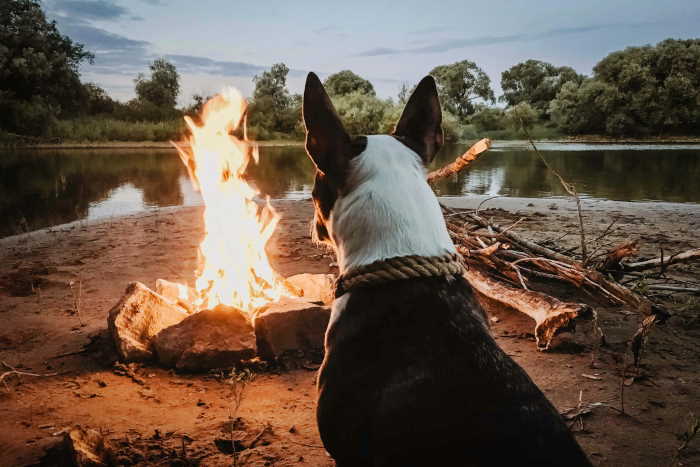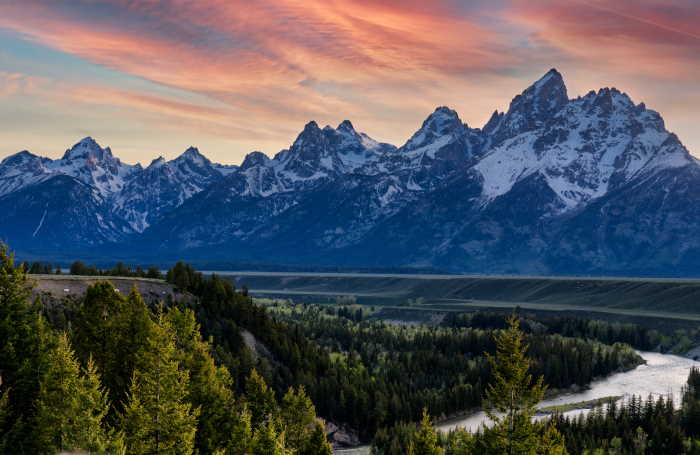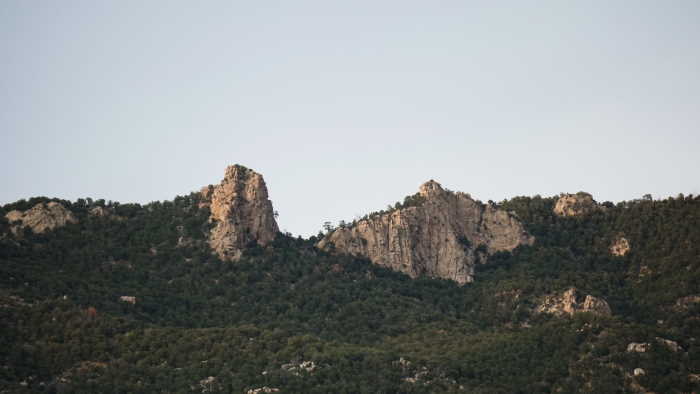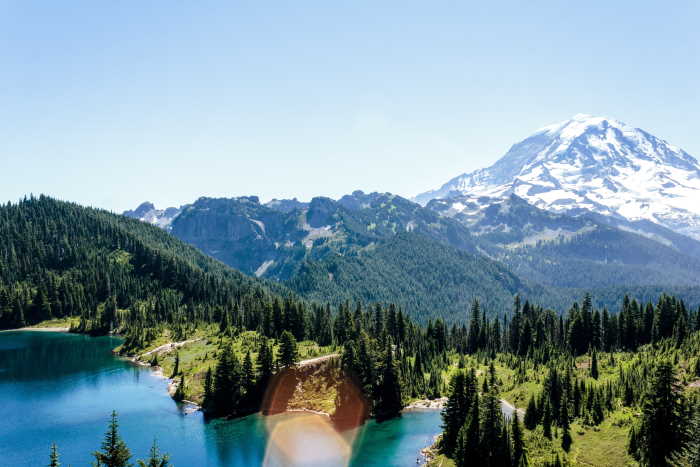
Camping cooler
When we think of camping, most likely the word that pops in our head is “no dogs allowed,” and it’s no wonder — many campsites don’t allow animals. But if you’re a pet lover who loves to camp, there are some exceptions.
While not all states allow dogs, most counties where dogs are allowed are in the Western U.S.; here are the locations of some of the best dog-friendly campgrounds in America
List of campsites where dogs are allowed
1. Snake River Plains National Recreation Area (Snake River Plain)
The Snake River Plains is a National Recreation Area located along the Snake River in Eastern Idaho and Eastern Oregon.
The recreation area was established by Congress in 1984, including over 100 miles (160 kilometers) of horseback riding trails. The park contains 17 archeological sites including 14 Native American burial mounds attributed to the Shoshone-Bannock Indians or other regional tribes such as the Nez Perce or Umatilla Indians.
The Snake River Plain National Recreation Area is also a premier destination for camping because of the wide selection of campsites that are available. The RV sites are powered with electrical hookups while tent sites have composting toilets, running water, picnic tables and fire pits. The RV sites are full hookup with water, sewer and trash collection while the other campsites have composting toilets, running water, picnic tables and fire pits.
For people who want to enjoy a simpler camping experience without all of the amenities of RV campsites, the Snake River Plain National Recreation Area offers 41 tent camping sites that are available on a first come-first served basis. These sites have composting toilets, running water and picnic tables. There are no RV hookups available at the tent camping sites.

Permitted Pets
Dogs, but no other animals are permitted in the park. The only exception is within the Snake River Plain and park boundaries, where certain species of wildlife are allowed to be hunted without a permit.
What to do with your pet dog on this adventure
Visit the Jackson Hole and Grand Teton National Parks; hike the Bighorn Canyon in Nebraska; go canoeing in Yellowstone Lake, a great lake for all-day paddling trips.
2. Bighorn National Forest
Bighorn National Forest, one of the largest national forests in Wyoming, is relatively new to the world as a whole. While it is generally open for visitors and camping year-round, some parts of it are restricted for fire fighting and biological research. Geographically speaking, the forest occupies over 1 million acres of land and extends from central Wyoming up to the Northern Continental Divide.
A popular form of camping in Bighorn National Forest is staying at a campground. Campgrounds are very well-developed and contain many facilities for tent campers such as restrooms, showers, showers, laundries, campsite kitchens, and stores that sell food and other supplies. The best part about camping in a campground is that you are guaranteed to have a spot.
There are lots of campgrounds in Bighorn National Forest, but some of the most popular include the Greybull River and Bighorn Canyon Discoverer’s Campgrounds. Fees can be quite high for some of these spots, and only overnight camping is allowed at some of them. However, there are great campgrounds that charge an “entry fee” rather than per-night fees. These types of campgrounds usually offer better facilities such as more bathrooms and showers or firewood for sale.
A lot can be done while camping in Bighorn National Forest! Hiking is one such activity. Some of the best spots for hiking are the Shoshone National Forest, Teton Wilderness, and Bighorn Canyon National Recreation Area. If you enjoy biking, head out to the Bridger Wilderness. Along with hiking and biking, there are other cool things you can do while camping in Bighorn National Forest. One of these is horseback riding which is very popular amongst many campers.

Permitted Pets
Dogs, but no other animals are permitted in the parks. The only exception is within Bighorn National Forest boundaries where certain species of wildlife are allowed to be hunted without a permit, including deer, elk, turkey and other useful game species.
What to do with your pet dog on this adventure
Visit the Jackson Hole and Grand Teton National Parks; hike the Bighorn Canyon in Nebraska; go canoeing in Yellowstone Lake, a great lake for all-day paddling trips.
3. Beaverhead-Deerlodge National Forest
The Beaverhead-Deerlodge National Forest is located in northwest Idaho, approximately 80 miles north of Yellowstone National Park and 40 miles east of the Yellowstone Valley Regional Airport in Glendive, Montana. It is 60 to 65 miles from the Montana border. The total area of this national forest is 17,000 acres, however only a portion of that area has been designated for camping sites. Within this designated camping area there are a total of 39 campsites which are dispersed in a variety of locations including the Riverside, Granite Creek, Horseshoe Bend and Corral Creek campgrounds.
These sites have been built in a way that allows for vehicle access to each site and also makes it easy to get in and out of the forest. Each site has a well-built fire ring and picnic table with a number of campsites having concrete latrines available at the campsite. There is no charge for use of these sites or any amenities that they offer.
Each site is first come, first served with the exception of Riverside Campground, which is available for reservations. This campground can accommodate both RVs along with tents and is within walking distance from Riverside Day Use Area. Riverside campsites have been designed to accommodate horses as well.
Permitted Pets
Dogs, but no other animals are permitted in the parks. The only exception is within Beaverhead-Deerlodge National Forest where certain species of wildlife are allowed to be hunted without a permit.
What to do with your pet dog on this adventure
Visit the three national parks: Glacier, Gates of the Arctic and Yellowstone — visit them all and there’s plenty of room for your dog to run around!
4. Cibola National Forest
The Cibola National Forest is one of the most visited forests in the United States. It’s located in New Mexico, stretching 93,000 acres across Colorado, Arizona, and New Mexico. This forest is home to over 3 million native plants and animals native to the region. The Cibola National Forest borders on some of America’s most renowned nature reserves which are Pinacate, Magdalena Mountains, and its namesake Cibola itself.
For a backpacking trip, there are three main trails that could be followed to reach your destination. These include the Cebolla Trail, the Cebolla Basin Trail, and the Chama River Trail. For backpackers who prefer to camp out, there are about 18 designated campsites throughout the forest that offer great views of Taos Canyon and other surrounding areas. Checkout our selection of backpacks for your backpacking trips.
During springtime, you’ll find the wildflowers blooming throughout this forest. All of the wildflowers that you’ll find in this area include New Mexico Penstemon, lupines, Indian paintbrush, and a variety of bluebonnets.
During summertime, temperatures will be warm and can go up to 100 degrees Fahrenheit. This is also the time when you will find a number of wild animals roaming around the forest. In fact, it’s not uncommon to spot a few deer or turkeys during your camping trip. With what you have learned from this article, you should be able to get ready for your next camping trip to Cibola National Forest!

Permitted Pets
Dogs, but no other animals are permitted in the park.
What to do with your pet dog on this adventure
Visit the Sangre de Cristo Mountains (see our guide for more info) — there’s mountain biking, hiking and camping all around.
5. Mount Rainier National Park
Mount Rainier National Park is a beautiful and expansive park situated in Pierce County, Washington. It contains the beautiful Mount Rainier, which at 14,410 feet high is the second highest mountain in the Cascade Range and the fifth highest mountain in all of North America. The park also includes other major peaks such as Mount Tahoma (11,730 feet), Mount Tacoma (8365 feet), and Mount Adams (12,276 feet).
Mount Rainier National Park is home to many beautiful waterfalls including Paradise Falls, Mossy Falls, and Spray Falls. The park also has five different glaciers that can be accessed through hiking trails guided by park rangers. There are two visitor centers in the park with one located near the old lodge (which is currently closed until September 2016) and one at Longmire near Paradise Inn.
Camping can be done in three designated campgrounds inside the national park: Ohanapecosh Campground is the only one open all year round. All other campgrounds will open depending on the season and close at different times. Camping can also be done anywhere in the national park for a small fee. View our list of the best camping tents.
The park has several designated hiking trails that are led by National Park rangers. This includes the two most popular trails, Skyline-to-the-Sea Trail, which is about 17 miles long, and Wonderland Trail which is about 93 miles long. The Skyline to the Sea trail stretches between Longmire and Paradise, while the Wonderland Trail goes from Mineral Explore to Sunrise. It is suggested that these two trails are taken in two separate trips due to their length and difficulty.

Permitted Pets
Dogs, but no other animals are permitted in the parks. The only exception is within Mount Rainier National Park boundaries where certain species of wildlife are allowed to be hunted without a permit.
What to do with your pet dog on this adventure
Visit Mount Rainier National Park and go skiing or snowboarding; pack an overnight bag and set up camp at Sunrise Campground; hike along trails featuring some of the best views in Washington (and take plenty of photos!).
Dogs policy in the United States
Dogs are permitted on national forest lands, federal lands and some wildlife areas. All individual trails may not permit your pet to go along though, so bring a list of dog-friendly trails with you and consult with the park manager before beginning the trek



